
Editor's note: This is a nostalgic theater.
The old director Guo Baochang once commented on a movie like this: "As soon as a few scenes came out, I was stupid. How did this thing come out in China? What kind of people made this? With my intuition and sensitivity as a director, I know a A new batch of newcomers are up..."
The film is called "Red Elephant", which is a children's film. It was produced in 1982, and it has been 40 years since then. The "a group of newcomers" mentioned by Guo Baochang is the famous "fifth generation" who began to lead Chinese films to new heights in the 1980s.
Children's films have influenced generations of Chinese people, but they are no longer a mainstream film genre. Looking back thirty or forty years, children's films were once part of the glory of Chinese cinema. This film is the product of China's practice of "socialist superiority". In 1981, the Central Work Conference called on the whole party and the whole society to care about the growth of young people. The 60-year-old "Jiang Jie" Yu Lan was ordered to set up a children's film studio and became the first director. "Red Elephant" is one of the first batch of mission films produced by Erying. At the same time, it is also the graduation practice assignment of the first batch of film students after the resumption of the college entrance examination.
Now looking back at this childlike film, the main creative lineup of the title is really amazingly luxurious.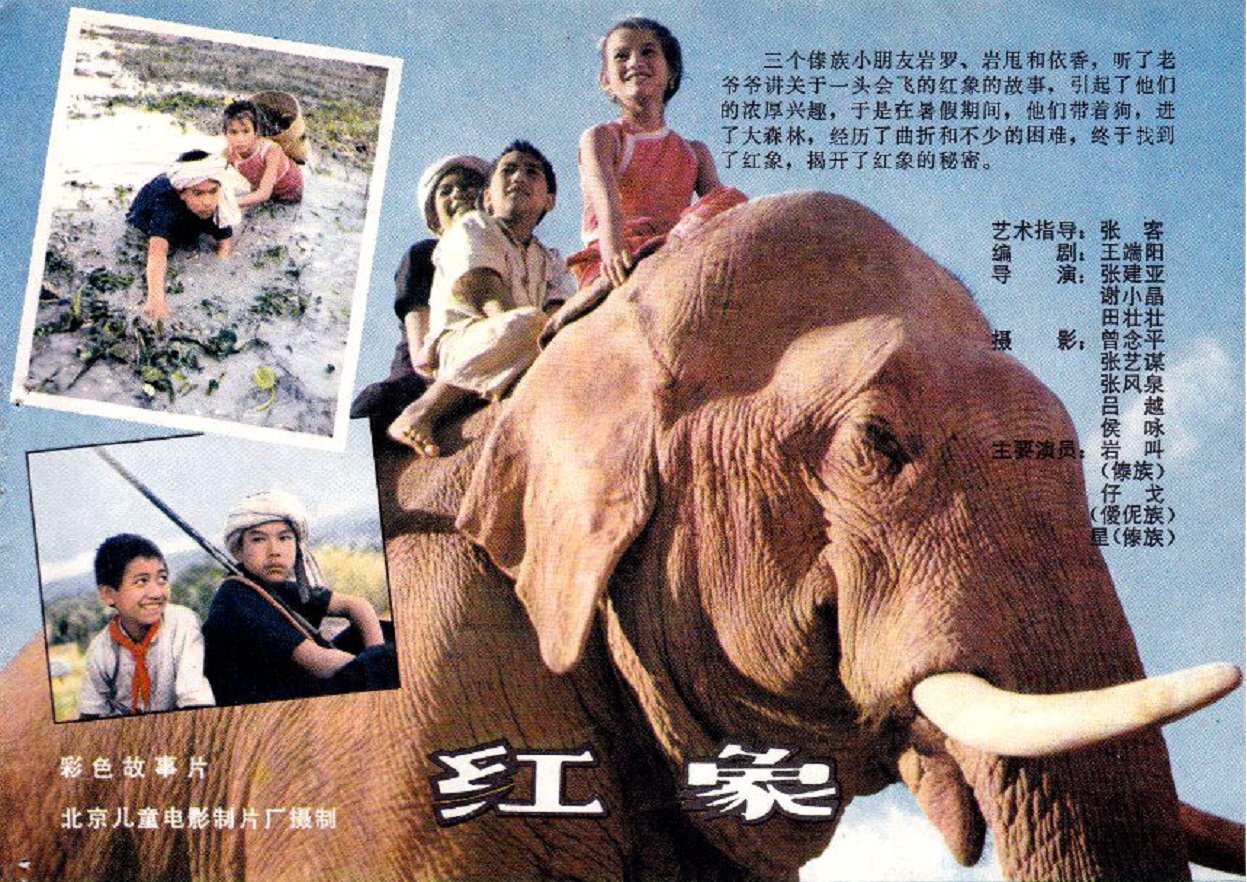
Xie Xiaojing stayed at the school to teach after graduation. He served as the director of the director department of the Beijing Film Academy and the director of the Beijing Film Factory. Although there are not many works, the screenwriting work "Oh, Fragrant Snow" continued the creation of children's films and won the Best Children's Film Award at the Berlin Film Festival.
Tian Zhuangzhuang, a representative of the fifth generation of directors, won awards for films such as "The Blue Kite", "The Hunting Ground Zasa" and "The Horse Thief". , In recent years, he has made outstanding achievements in supporting and helping young directors, and his supervisory works are also excellent.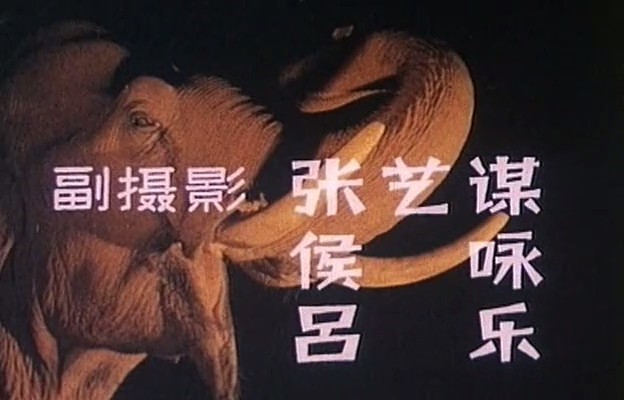
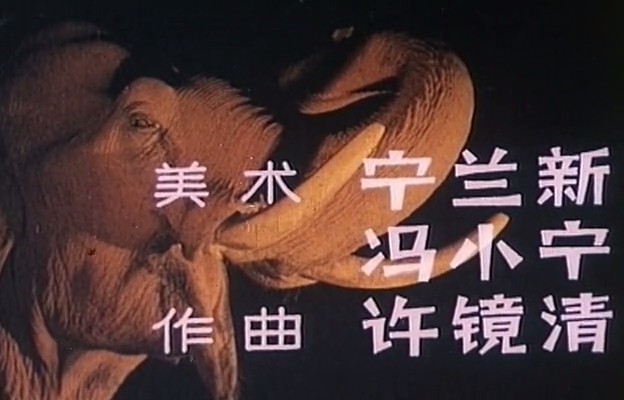
In addition, Feng Xiaoning, the artist, later filmed classic masterpieces such as "The Atmosphere Disappears", "Red River Valley", "Love in the Yellow River"; the composer Xu Jingqing is the great god who wrote the amazing soundtrack for "Journey to the West", although he is not Class of 78 graduate, but the music infuses the whole film with a very clear and chic quality.
"Red Elephant" is the first work Erying prepared for the Children's Day that year. The main characters are three children from ethnic minorities in Yunnan. Other elements include two elephants and a leopard. In the autumn of 1981, the factory director Yu Lan brought his son Tian Zhuangzhuang and asked him to take his classmates to make a film for the children.
The writer Wang Duanyang has lived in Yunnan for nine years. In the original script, he connected the plant anecdotes and natural wonders he saw in Yunnan with the clues of three children going into the mountains to investigate red elephants, so the theme is to encourage children Learn science, love science. The story is simple and clear, the theme is positive, and it is based on the rich visual wonders of Xishuangbanna. Children and animals are the protagonists. It is a very suitable topic for children's movies.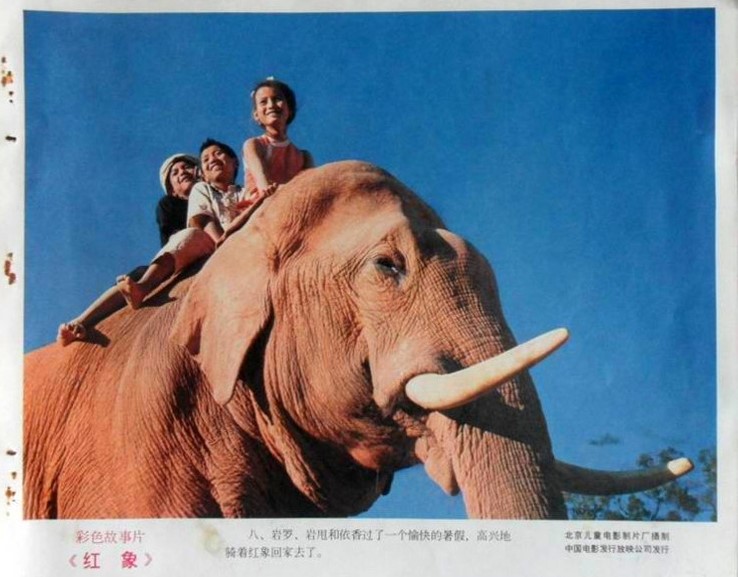
Although this film is regarded as an internship work, it is different from the general work in that it is also the first official film included in the production task of the Children's Film Studio, and there is a chance to be released. Very rare, in the film school, this is a dream internship that everyone envies.
Although it is a children's film, looking back at "Red Elephant", many of the "master weather" that will appear in the fifth-generation works in the future have already begun to emerge in this film. Irregular composition, the use of light in extreme environments, close-ups used to depict the psychology of characters, poetic overhead shots that place people in the environment... As an "academic", this film was born 's creation is a warm-blooded practice of youth and ideals.
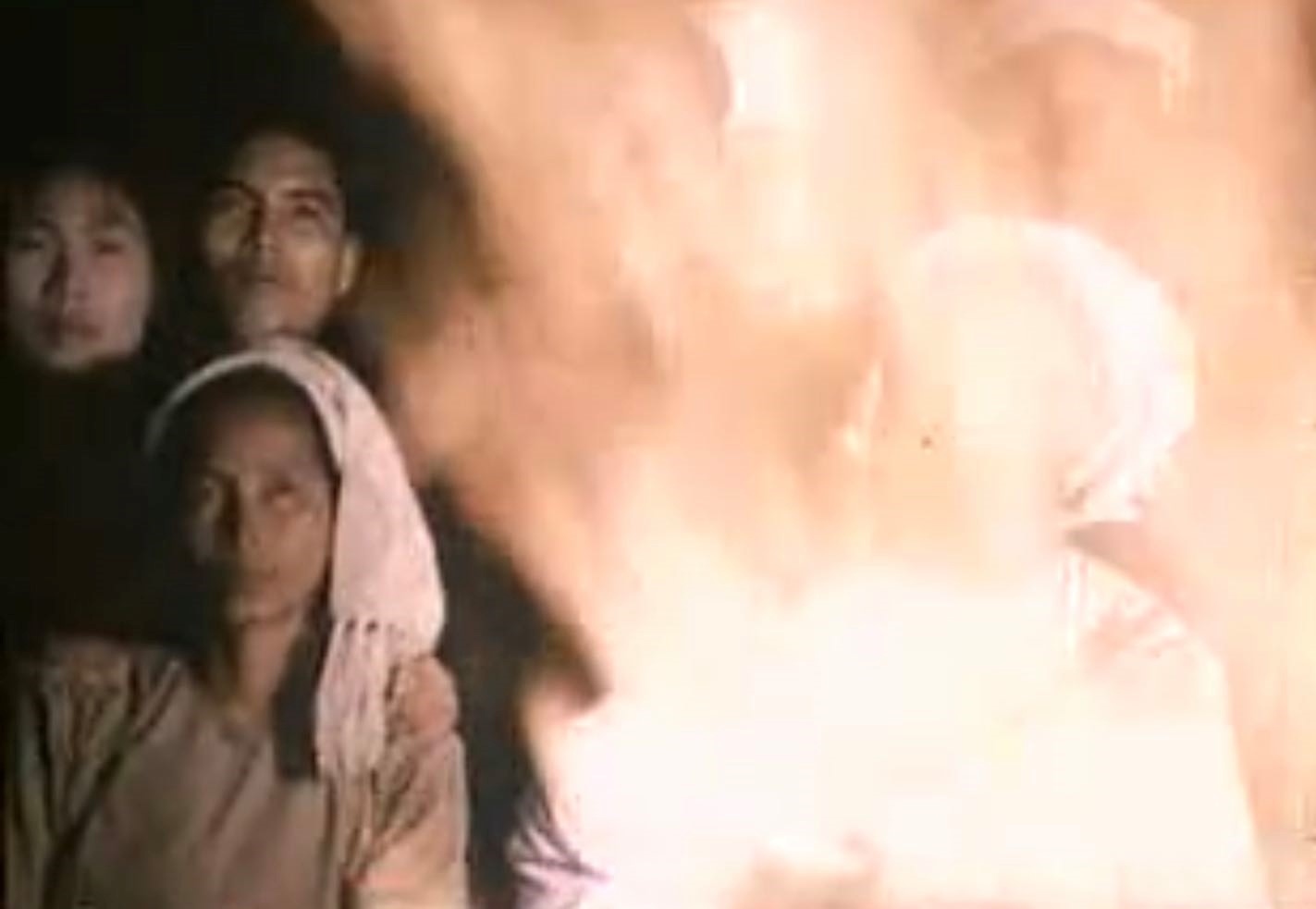
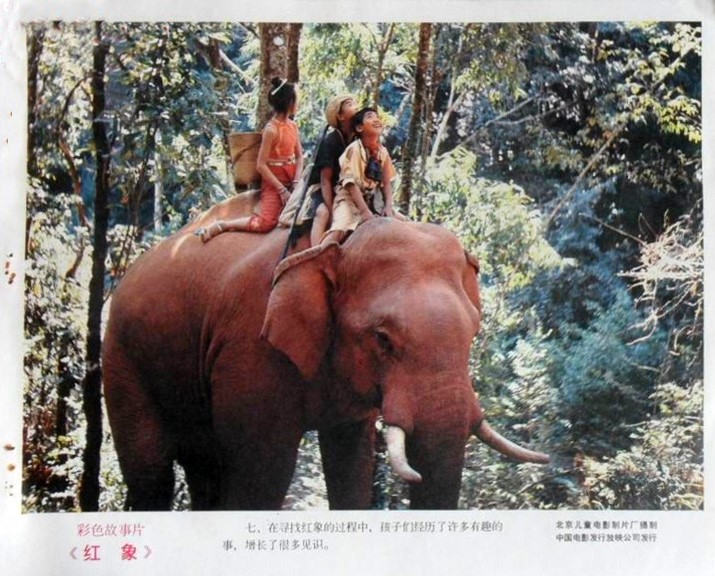
In the beginning, all the feelings of entering the forest were the freshest. The children passed through the streams and meadows, and the bushes and stone forests. They talked about their curiosity and reverie about the world in their childhood, and there were also common disputes and Xiaojiujiu in childhood. Gradually, the crisis gradually emerged along the way, and turmoil followed, fighting red deer, encountering leopards, fighting and parting ways, rescue in swamps in distress, false alarm "night of terror", children's adventures are intertwined, tense and fun. In addition, the three children also took the audience to further understand the forest. During the journey, children and children, children and animals, children and nature are all integrated into this "image-seeking journey".
Director of photography Zeng Nianping later recalled this creation, saying, "Yimou made a film for the first time, and he attached great importance to this opportunity. It can also be seen that he was indeed full of energy." For a children's film, Zhang Yimou even proposed that he should shoot " Wild, strange, chaotic, black" visual style. He advocates breaking the routine of shooting, such as using incomplete compositions. Later, it was discovered that some parts of "Red Elephant" already had the shadow of "One and Eight", but it was not noticed at the time. Hou Yong and Lu Le's natural and realistic styles also have their own place in the sunshine of Xishuangbanna. Some commentators said that from a technical point of view, the filming of this film must be rough due to the conditions at that time; but from the perspective of photography concepts and film language, "Red Elephant" should be a Chinese film after ten years of "Cultural Revolution". After repression, he systematically and boldly made a new attempt for the first time. Although it was a simple story, it gave such a group of young people the opportunity to change their ideas.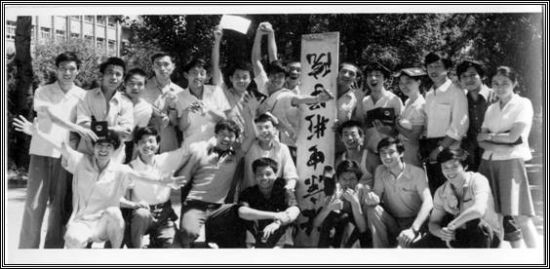
For children's films at that time, "Red Elephant" was brand new, not only in terms of main innovation, audio-visual innovation, and new stories, but also a new way of telling this genre. At that time, the idea of the theme was a very important prerequisite for filming. Many children's films, the creators would also tend to let the characters or narration in the film speak out some major truths or knowledge points. What is valuable is that when the directors of 78 took over this project, they thought about it early and put an end to preaching. Even, in order to "put an end", this group of rebellious young people insisted that even the introduction of some habits of elephants in the script and the explanation of the causes of "Red Elephant Pond" were all deleted, so that the film received a lot of feedback later. I think it is one of the regrets of the film that the plot of this aspect is not explained clearly enough, and the transmission of knowledge has been compromised.
As for the truth of the "red elephant", it is a story of "approaching science". At the end, the scene where the elephant and the baby elephant send the children home is the most direct response to the scene of harmony between man and nature. In the words of few characters, the children's "rebellious" words for parents and school discipline were also added, and the contrast between the forest and the school was reset with the actual result - the school is what children want to escape, the teachers of the school and the school. The adults in the family couldn't answer the secret of the red elephant, and in the end it was the forest that gave them the true knowledge.
In the creative summary after the shooting, the three directors mentioned that the theme of the original script was to encourage children to learn science and love science. But the actual geography of Yunnan makes these young people who are committed to innovating Chinese film aesthetics feel something full of poetry. This hazy thing about beauty transcends the spirit of scientific truth-seeking. They try to expand the original single theme. , the search for scientific truth is a contextual clue that can connect a more poetic interaction between man and nature.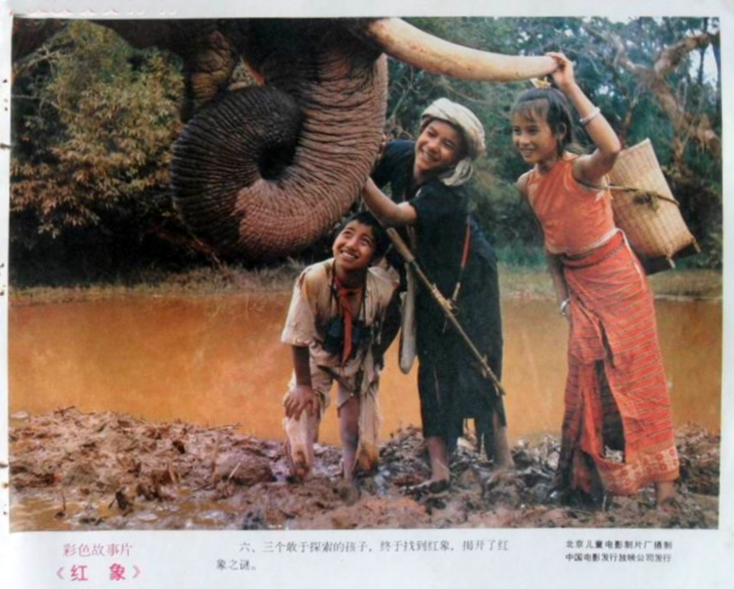

An interesting interlude is that after the film was released that year, it also caused some minor controversy. In 1983, the "Film Review" magazine published an article about "Red Elephant" raising opinions among students' parents. Some parents thought that the children described in the movie ran away without telling their parents during the summer vacation, and it was very dangerous to enter the forest. The behavior, which makes parents afraid, is the "reverse effect" of education. In fact, "Red Elephant" is more like a forest fairy tale, but it seems that in every era, parents are easy to worry that their children "learn badly" in various ways.
Zhang Zhi, a children's writer who used to be the director of the creative department of the Children's Film Studio, believes that the fifth generation of Chinese films and the peak of children's films ushered in at the same time in the 1980s are inseparable from the social environment of reform and opening up at that time. Graduates have started the fifth generation. Although children's movies and fifth-generation movies seem to be two paths, there is no direct connection, but the creation is the same. The success of any kind of film is not accidental, it is emancipation of the mind the result of."
So forty years later, on Children's Day, I thought of this movie. May all happiness, innocence, and freedom be accompanied by good movies.
The old director Guo Baochang once commented on a movie like this: "As soon as a few scenes came out, I was stupid. How did this thing come out in China? What kind of people made this? With my intuition and sensitivity as a director, I know a A new batch of newcomers are up..."
The film is called "Red Elephant", which is a children's film. It was produced in 1982, and it has been 40 years since then. The "a group of newcomers" mentioned by Guo Baochang is the famous "fifth generation" who began to lead Chinese films to new heights in the 1980s.
Children's films have influenced generations of Chinese people, but they are no longer a mainstream film genre. Looking back thirty or forty years, children's films were once part of the glory of Chinese cinema. This film is the product of China's practice of "socialist superiority". In 1981, the Central Work Conference called on the whole party and the whole society to care about the growth of young people. The 60-year-old "Jiang Jie" Yu Lan was ordered to set up a children's film studio and became the first director. "Red Elephant" is one of the first batch of mission films produced by Erying. At the same time, it is also the graduation practice assignment of the first batch of film students after the resumption of the college entrance examination.
Now looking back at this childlike film, the main creative lineup of the title is really amazingly luxurious.

"Red Elephant" poster
Director Zhang Jianya, and later filmed films such as "The Wandering Story of San Mao", "Mr. Wang's Desire", "Kidnapping Karajan" and other films. He used to be a banner of Chinese comedy films. ;Xie Xiaojing stayed at the school to teach after graduation. He served as the director of the director department of the Beijing Film Academy and the director of the Beijing Film Factory. Although there are not many works, the screenwriting work "Oh, Fragrant Snow" continued the creation of children's films and won the Best Children's Film Award at the Berlin Film Festival.
Tian Zhuangzhuang, a representative of the fifth generation of directors, won awards for films such as "The Blue Kite", "The Hunting Ground Zasa" and "The Horse Thief". , In recent years, he has made outstanding achievements in supporting and helping young directors, and his supervisory works are also excellent.


Looking at it now, the title of "Red Elephant" is "star-studded"
In addition to the "Director's Team", the photography team also gathered big names. Director Li Shaohong's husband, Zeng Nianping, as the "Green Pepper" of the photography department, formed the strongest photography team with students even older than him. There is no need to introduce Zhang Yimou's achievements. Lu Le and Hou Yong have also become independent directors in the future, and they are still active in their creations.In addition, Feng Xiaoning, the artist, later filmed classic masterpieces such as "The Atmosphere Disappears", "Red River Valley", "Love in the Yellow River"; the composer Xu Jingqing is the great god who wrote the amazing soundtrack for "Journey to the West", although he is not Class of 78 graduate, but the music infuses the whole film with a very clear and chic quality.
"Red Elephant" is the first work Erying prepared for the Children's Day that year. The main characters are three children from ethnic minorities in Yunnan. Other elements include two elephants and a leopard. In the autumn of 1981, the factory director Yu Lan brought his son Tian Zhuangzhuang and asked him to take his classmates to make a film for the children.
The writer Wang Duanyang has lived in Yunnan for nine years. In the original script, he connected the plant anecdotes and natural wonders he saw in Yunnan with the clues of three children going into the mountains to investigate red elephants, so the theme is to encourage children Learn science, love science. The story is simple and clear, the theme is positive, and it is based on the rich visual wonders of Xishuangbanna. Children and animals are the protagonists. It is a very suitable topic for children's movies.

"Red Elephant" stills
There is an old saying in the film industry that children and animals are the hardest to film. And "Red Elephant" revolves around children and animals. It is said that Yu Lan told Tian Zhuangzhuang that others would not want to do such a chore, and some of their like-minded buddies might be able to make a fortune.Although this film is regarded as an internship work, it is different from the general work in that it is also the first official film included in the production task of the Children's Film Studio, and there is a chance to be released. Very rare, in the film school, this is a dream internship that everyone envies.
Although it is a children's film, looking back at "Red Elephant", many of the "master weather" that will appear in the fifth-generation works in the future have already begun to emerge in this film. Irregular composition, the use of light in extreme environments, close-ups used to depict the psychology of characters, poetic overhead shots that place people in the environment... As an "academic", this film was born 's creation is a warm-blooded practice of youth and ideals.

Screenshot of "Red Elephant"
The opening of the film is very ambitious. Someone told the people in the village about their experience of encountering a flying red elephant in the forest. The camera swept across the faces of the audience, from children to adults, everyone held their breath, hard in the dark. The light creates a strong sense of suspense and mystery, and people's expressions are full of awe for the red elephant and the story of this forest adventure.
"Red Elephant" stills
Immediately afterwards, an elephant broke into the village in the middle of the night, and people and animals fled in a panic. The final picture was fixed on the close-up of the elephant's curling nose and howling. The sky-high fire was in sharp contrast with the dark night before, and a magical story in Xishuangbanna kicked off.
"Red Elephant" stills
After the feature film begins, the camera follows the child's perspective into a lively and peaceful rainforest. The three Dai youths with different personalities are lively and lively, Luo Yan is steady, Yan Dang is lively, and Yixiang is intelligent. At the same time, they have common characteristics of children and are full of curiosity. Three children embark on a forest elephant-hunting trip with the question of whether there really is a red elephant in the world. Yandang threw questions on the road: "Our teacher said that the elephants are all gray, and there are no red elephants at all. My father also said that there are no red elephants in the big zoo."In the beginning, all the feelings of entering the forest were the freshest. The children passed through the streams and meadows, and the bushes and stone forests. They talked about their curiosity and reverie about the world in their childhood, and there were also common disputes and Xiaojiujiu in childhood. Gradually, the crisis gradually emerged along the way, and turmoil followed, fighting red deer, encountering leopards, fighting and parting ways, rescue in swamps in distress, false alarm "night of terror", children's adventures are intertwined, tense and fun. In addition, the three children also took the audience to further understand the forest. During the journey, children and children, children and animals, children and nature are all integrated into this "image-seeking journey".

"Red Elephant" stills
Looking back at "Red Elephant", there is a lot of understanding and ambition of these creators for the film hidden in it. Completely different geography, several shots overlooking the landscape of the stone forest, the figures among the vast mountains and rocks, the relationship between the land and people is a bit like the "yellow earth"; the rock was thrown into the swamp, and the one dragged it out when it was in danger. The heroic performance of the wolf dog in the swamp seems to have a distant echo with the last thrilling run of "The Atmosphere Disappears".Director of photography Zeng Nianping later recalled this creation, saying, "Yimou made a film for the first time, and he attached great importance to this opportunity. It can also be seen that he was indeed full of energy." For a children's film, Zhang Yimou even proposed that he should shoot " Wild, strange, chaotic, black" visual style. He advocates breaking the routine of shooting, such as using incomplete compositions. Later, it was discovered that some parts of "Red Elephant" already had the shadow of "One and Eight", but it was not noticed at the time. Hou Yong and Lu Le's natural and realistic styles also have their own place in the sunshine of Xishuangbanna. Some commentators said that from a technical point of view, the filming of this film must be rough due to the conditions at that time; but from the perspective of photography concepts and film language, "Red Elephant" should be a Chinese film after ten years of "Cultural Revolution". After repression, he systematically and boldly made a new attempt for the first time. Although it was a simple story, it gave such a group of young people the opportunity to change their ideas.

The 1982 graduation group photo of the 78th class of the Photography Department of Beijing Film Academy
There are also some influences, perhaps subtle. The creators of Class 78, who started their official film careers from "Red Elephant", also planted the seeds of paying attention to minority cultures through this trip to Yunnan. Tian Zhuangzhuang later filmed "The Hunting Ground Zaza", "The Horse Thief" and "The Ancient Tea Horse Road", and Feng Xiaoning filmed "Red River Valley" and "Gada Merlin", expressing people's thinking about the meaning of life in poetic film language. The culture and land features of the film have become vivid characters in the film.For children's films at that time, "Red Elephant" was brand new, not only in terms of main innovation, audio-visual innovation, and new stories, but also a new way of telling this genre. At that time, the idea of the theme was a very important prerequisite for filming. Many children's films, the creators would also tend to let the characters or narration in the film speak out some major truths or knowledge points. What is valuable is that when the directors of 78 took over this project, they thought about it early and put an end to preaching. Even, in order to "put an end", this group of rebellious young people insisted that even the introduction of some habits of elephants in the script and the explanation of the causes of "Red Elephant Pond" were all deleted, so that the film received a lot of feedback later. I think it is one of the regrets of the film that the plot of this aspect is not explained clearly enough, and the transmission of knowledge has been compromised.
As for the truth of the "red elephant", it is a story of "approaching science". At the end, the scene where the elephant and the baby elephant send the children home is the most direct response to the scene of harmony between man and nature. In the words of few characters, the children's "rebellious" words for parents and school discipline were also added, and the contrast between the forest and the school was reset with the actual result - the school is what children want to escape, the teachers of the school and the school. The adults in the family couldn't answer the secret of the red elephant, and in the end it was the forest that gave them the true knowledge.
In the creative summary after the shooting, the three directors mentioned that the theme of the original script was to encourage children to learn science and love science. But the actual geography of Yunnan makes these young people who are committed to innovating Chinese film aesthetics feel something full of poetry. This hazy thing about beauty transcends the spirit of scientific truth-seeking. They try to expand the original single theme. , the search for scientific truth is a contextual clue that can connect a more poetic interaction between man and nature.

"Red Elephant" stills
"Wouldn't it be more meaningful if children could have a strong love for nature and animals through everything displayed on the screen? We confidently believe that children will have a passion for life and everything that is beautiful. Sentiment will make them more interested in all kinds of things, and movies can also play a role in encouraging children to love science.”
"Red Elephant" stills
"In children's films, there should be an invisible teacher instructing children how to watch movies." In the summary of the filming of the three directors, they talked about their hope to convey their ideas in the way of the film itself, "You should pay attention to how to guide children, not Doing it in a preaching way is not the way of the movie." This point, jumping out of the genre of children's films, is also the same in their future practice.An interesting interlude is that after the film was released that year, it also caused some minor controversy. In 1983, the "Film Review" magazine published an article about "Red Elephant" raising opinions among students' parents. Some parents thought that the children described in the movie ran away without telling their parents during the summer vacation, and it was very dangerous to enter the forest. The behavior, which makes parents afraid, is the "reverse effect" of education. In fact, "Red Elephant" is more like a forest fairy tale, but it seems that in every era, parents are easy to worry that their children "learn badly" in various ways.

"Red Elephant" poster
"Red Elephant" did not become the starting point of the fifth generation that was recognized as "inscribed in history" like "One and Eight", and the real peak of the Children's Film Studio had not yet arrived at this time. But from then on, making movies for kids became something that a group of creators took extremely seriously. So later, we had "Little Bell", "Thunderbolt Babe", "The Atmosphere Disappears", "Boy Jarry" in our childhood...Zhang Zhi, a children's writer who used to be the director of the creative department of the Children's Film Studio, believes that the fifth generation of Chinese films and the peak of children's films ushered in at the same time in the 1980s are inseparable from the social environment of reform and opening up at that time. Graduates have started the fifth generation. Although children's movies and fifth-generation movies seem to be two paths, there is no direct connection, but the creation is the same. The success of any kind of film is not accidental, it is emancipation of the mind the result of."
So forty years later, on Children's Day, I thought of this movie. May all happiness, innocence, and freedom be accompanied by good movies.
Related Posts